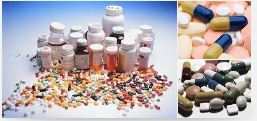Tuberculosis (TB) caused from infection of Mycobacterium tuberculosis continues as a global epidemic. Third of the world population is at risk of developing active TB. Each year, 9 million patients are newly diagnosed with active TB and 2 million patients die of TB. The rapid spread of the human immunodeficiency virus (HIV) fueled the TB epidemic, especially in sub-Saharan Africa, where 28% of TB patients are HIV positive. The current first-line treatment for TB is a multidrug regimen consisting of rifampin, isoniazid, pyrazinamide, and ethambutol (RHZE). It must be taken for at least 6 months to achieve high cure rates (more than 95% in experimental settings).
Limitations associated with the currently available TB treatment are:
1) Duration and complexity of treatment result in nonadherence to treatment. This leads to suboptimal response (failure and relapse), the emergence of resistance, and continuous spread of the disease.
2) Adverse events in response to anti-TB drugs are common and contribute to the problem of nonadherence. The current first-line treatment for TB is a multidrug regimen consisting of rifampin, isoniazid, pyrazinamide, and ethambutol (RHZE). It must be taken for at least 6 months to achieve high cure rates (more than 95% in experimental settings).
3) Multidrug-resistant (MDR) -TB is defined as TB caused by M. tuberculosis strains that are resistant to, at least, the two most powerful first-line anti-TB drugs, isoniazid and rifampicin; extensively drug-resistant (XDR)-TB refers to a form of disease caused by strains of M. tuberculosis that are resistant to isoniazid and rifampicin, in addition to any fluoroquinolone, and to at least one of the three following injectable drugs: capreomycin, kanamycin or amikacin. Resistant TB occurs in the presence of partially suppressive drug concentrations that enable replication of bacteria, the formation of mutants, and overgrowth of wild-type strains by mutants (selective pressure). Mathematical models show that the MDR and XDR-TB epidemics have the potential to further expand, thus threatening all gains in TB control over recent decades.
The World Health Organization developed the directly observed therapy short course (DOTS) strategy to optimize response and adherence to TB treatment. However, DOTS is labor-intensive and expensive. It causes a high burden on public health programs, especially in developing countries with limited human resources. The rapid development of new anti-TB drugs has been hampered by several obstacles. First of all, the TB drug market is associated with insufficient profit opportunity or investment return to instigate pharmaceutical industries to develop new drugs.
New Drug:
TMC207 is a first-in-class diarylquinolone compound with a novel mechanism of action and potent activity against drug-sensitive and drug-resistant TB.
TMC207 has bactericidal and sterilizing activity against M. tuberculosis and other mycobacterial species but little activity against other bacteria. An EBA study in treatment-naive patients with pulmonary TB showed delayed, modest activity of the drug after 7 days, and a Phase II efficacy study conducted in patients with MDR-TB taking TMC207 plus an individualized background regimen showed impressive results after 2 months of treatment, with the results of a longer TMC207-based treatment course to follow. The drug appears to be safe and well tolerated, and development plans with the goal of an MDR-TB indication are well underway. the management of the over 500,000 cases of MDR-TB and XDR-TB would greatly benefit from availability of a new drug like TMC207, which is potent, well tolerated and structurally and mechanistically unrelated to current first-line TB drugs. Fortunately, given the product development partnership between Industry and the TB Alliance, both strategies (using TMC207 in shorter first-line regimens or using it in second line regimens for drug-resistant M. tuberculosis infections) are being pursued.
The maximum plasma concentration (Cmax) is reached after 5 h (Tmax). Average steady-state plasma concentration of 0.6 μg/ml form 8 weeks of treatment (400 mg daily dose for 2 weeks, followed by 200 mg three times a week for 6 weeks). It has an exceedingly long terminal half-life of 173 hr. It is metabolized by oxidative metabolism via cytochrome P450 isoenzyme CYP3A4. The majority of adverse events are of mild or moderate intensity. Nausea is significantly more frequently reported by patients treated with TMC207 in the MDR-TB trial. Diarrhea, arthralgia, dizziness, hyperuricemia and eye disorders are more frequent, but not of statistical significance. TMC207 produces increases in the QT interval, but no pathologically prolonged QT or corrected-QT values are observed. The clinical activity of TMC207 validates ATP synthase as a viable target for the treatment of tuberculosis.
